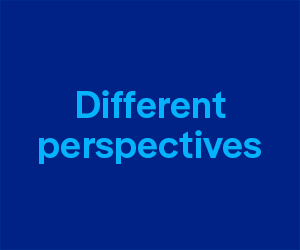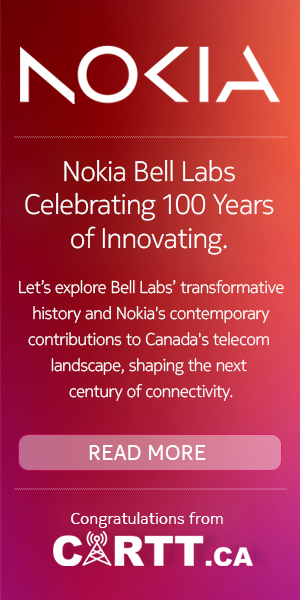
By Amanda Oye
OTTAWA – A CRTC inquiry into accessible wireless originally announced in June 2020 is now well underway, with the deadline to submit comments having passed in late August of this year.
Three organizations representing Deaf, Deaf-Blind or Hard of Hearing (DDBHH) Canadians – Deaf Wireless Canada Consultative Committee-Comité pour les Services Sans fil des Sourds du Canada (DWCC-CSSSC), Canadian Association of the Deaf-Association des Sourds du Canada (CAD-ASC) and Canadian National Society of the Deaf-Blind (CNSDB), (collectively DWCC et al.) – came together and submitted several documents in response to the CRTC’s call for comments.
The documents delve into the concerns of DDBHH Canadians and highlight the need for accessible wireless plans that better meet their needs.
Currently, wireless providers are required to offer accessible plans and to promote those plans in accessible ways.
The Commission, however, indicated in its notice of consultation for the inquiry that it is aware of concerns Canadians with disabilities have about the accessibility plans currently available to them as well as about the way accessibility plans are being promoted.
In their intervention, DWCC et al. list out several barriers created by typical mobile wireless plans including a “systemic unawareness of the Accessibility Plan.”
A major issue is that there is a disconnect between what is happening at the corporate level of the wireless companies and in the stores.
Corporate “will say yes, we are ready to implement these things and we can book interpreters for accessibility at the stores,” said Lisa Anderson, DWCC-CSSSC chairperson, in an interview with Cartt.ca (we spoke using Video Relay Service with an interpreter facilitating the conversation between us over the phone.)
However, “people in general, people in the stores and staff who are not at the corporate level aren’t aware of these implementations,” Anderson said.
This is highlighted in a secret shopper’s study DWCC et al. included with their intervention.
“People in general, people in the stores and staff who are not at the corporate level aren’t aware of these implementations.” – Lisa Anderson, DWCC-CSSSC
“A lot of people would try and write notes, or they didn’t have the ability to know what’s the best step to communicate,” Anderson said. “Lots of hearing people rarely meet deaf people” and so do not know how to approach communicating with them.
There were also situations where staff would want to try to help a deaf customer but would struggle to find the necessary information.
“A lot of them would go online to their own company website to search things out and couldn’t find that information for the customers,” Anderson said.
Anderson said there needs to be marketing, promotion or awareness campaigns to put the word out about what is available so both customers and staff are aware.
There should also be publicly available email addresses for disability departments at the companies – Bell is the only one of the major companies that makes its email address for its accessibility department publicly available, Anderson said.
Other companies provide contact information, but it is common for it to be specific to accessibility plans, she said, but not for generic accessibility services or products.
Anderson said she has been told not to share email addresses with the public that she had for people in charge of accessibility.
“They don’t want me as a chairperson to be sharing information to the general public about how to get in touch with their accessibility department,” she said.
A potential solution for some of these issues, in addition to improvements in staff training and education, is to have specific stores that are accessible. Companies could hire deaf employees to work there, which would enable deaf customers to go into the dedicated stores to communicate with someone who is able to do so effectively in sign language and who understands them and their unique needs, Anderson explained.
The stores could also have scheduled or on-demand video remote interpreting for customers at other locations, she said.
Many of the other barriers DWCC et al.’s intervention outlined are related to the cost of plans.
These include limited data GB packages, which are an issue for DDBHH people who “use ASL and LSQ to communicate over the wireless network,” and throttling or network management, which “creates blurry video communications and force DDBHH consumers to pay extras for “speed passes”,” the intervention says.
“Equity and equality are two very different concepts,” said Wissam Constantin, vice president of governance and membership of CAD-ASC, in an email to Cartt.ca.
He illustrated this point by using an example of two siblings, one of whom is Deaf.
“The hearing sibling can talk with their parent(s) on the phone without limits or barriers,” Constantin said.
“Meanwhile, the Deaf sibling can only talk with their parent(s) on video call for five minutes,” after which they either have to hang up because their data is running out or be “forced to pay for additional data expenses to be able to communicate with their beloved people or in case of emergencies,” he said.
“Many DDBHH people suffer from language deprivation and isolation and now are required to pay more to be able to communicate with others, especially during the pandemic and COVID-19 public health restrictions.”
Constantin pointed out some of the additional costs DDBHH people may already incur in order to make their lives accessible such as strobe light fire alarms.
“Now the Deaf community is expected to pay extra to have sufficient data to be able to communicate in our signed language,” he said.
The current CRTC inquiry is part of a long journey towards accessibility.
DWCC-CSSSC has been “involved in many CRTC actions since 2015 until now. We’ve gone to a lot of committee meetings and basically, they finally were allowing us to take this step to open this investigation as a proceeding to do some research to get some viable data,” Anderson said.
DWCC-CSSSC has also previously provided information to wireless providers, but they did not implement or utilize that information fully. “Then the secret shopper study started and that made such a difference because that was… proof in the pudding as it were,” she said.
CAD-ASC was founded in 1940 and has been working with the CRTC since “around 45 years ago when we acknowledged a big need to advocate in the Telecommunication and broadcasting field,” Constantin said. Recently CAD-ASC has contributed to CRTC proceedings on topics including video relay service establishment and review and CRTC’s Accessibility Reporting Regulations.
CAD-ASC has also spent time building relationships with companies in order to advocate for things like accessible wireless plans.
For the DWCC et al.’s full CRTC intervention, please click here.
.




